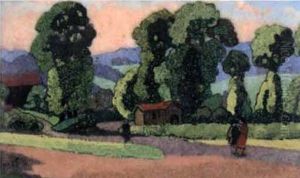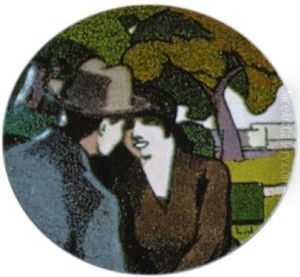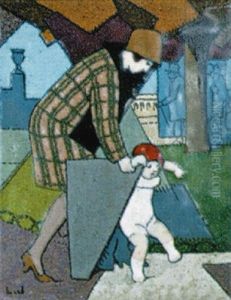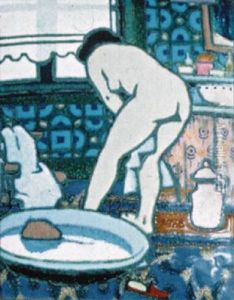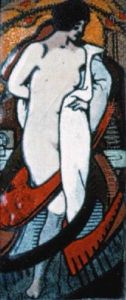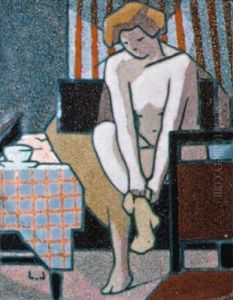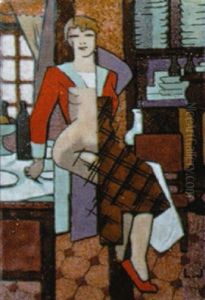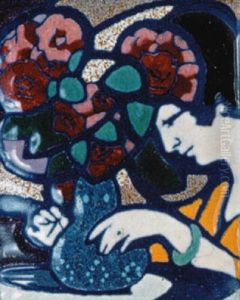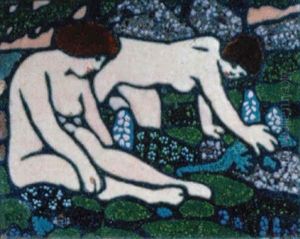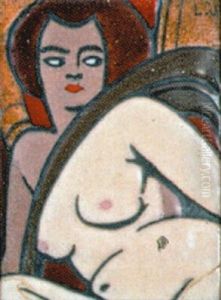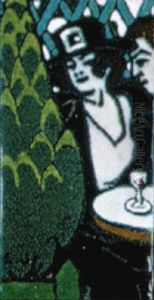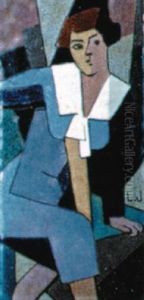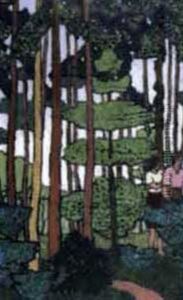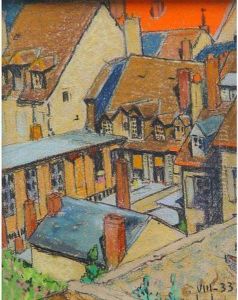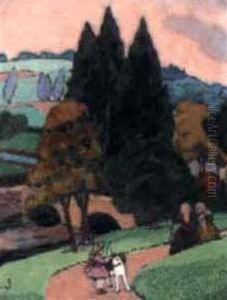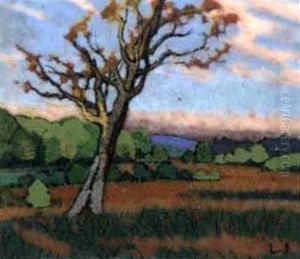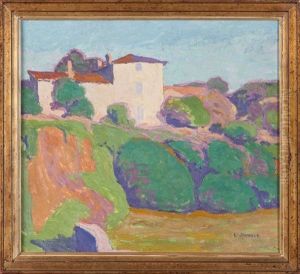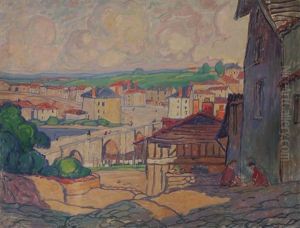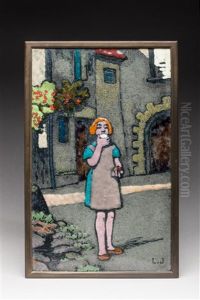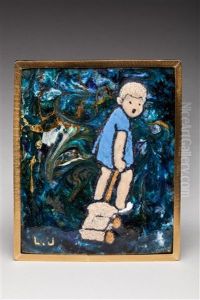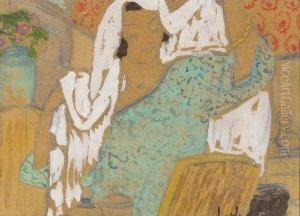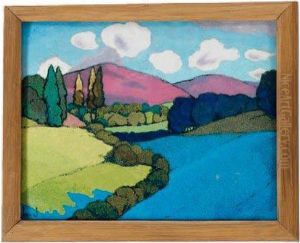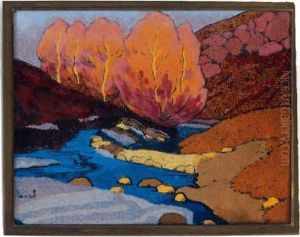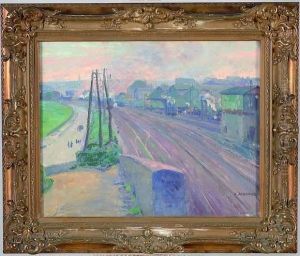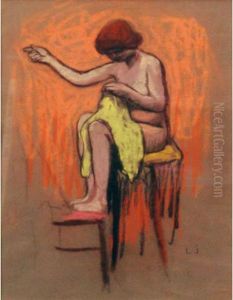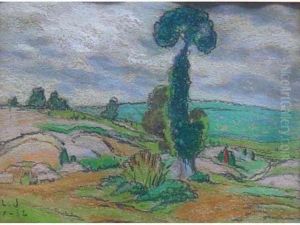Leon Jouhaud Paintings
Leon Jouhaud was a French artist born in 1874 in Limoges, France, a city known for its decorative porcelain. Jouhaud's artistic journey is deeply intertwined with the rich ceramics tradition of his hometown, which significantly influenced his career and artistic output. He was not only a painter but also a master of enamel work, reviving and innovating the art form that Limoges has been famous for since the Middle Ages.
Jouhaud's education in art began in Limoges, where he was initially trained in the traditional techniques of porcelain painting, a craft that had been pivotal to the region's economy and cultural heritage for centuries. His talent and interest in the broader spectrum of art led him to further his studies in Paris, where he was exposed to the vibrant art scene of the late 19th and early 20th centuries. This exposure allowed him to absorb various influences, including Impressionism and Art Nouveau, which he would later blend with his deep knowledge of enamel work to create unique pieces.
Throughout his career, Jouhaud was devoted to elevating the status of enamel as a fine art. He experimented with traditional techniques, pushing the boundaries of enamel work to achieve greater depth, luminosity, and color in his pieces. His works often depicted scenes from nature, religious themes, and portraits, characterized by their vivid colors and intricate details. Jouhaud's contribution to the art of enameling was recognized in his time, and he was commissioned to create works for various public and private collections.
In addition to his work in enamel, Jouhaud was an accomplished painter, illustrator, and decorator. He was involved in designing interiors and creating murals, applying his artistic vision across a range of mediums and projects. Despite his diverse talents, it is his innovation and mastery in the art of enamel for which he is most remembered today.
Leon Jouhaud passed away in 1950, leaving behind a legacy that has had a lasting impact on the art of enamel and the artistic heritage of Limoges. His work remains a testament to the potential of traditional crafts to be transformed into fine art through creativity, innovation, and mastery of technique.
